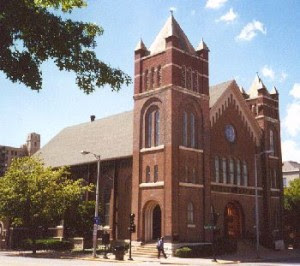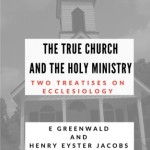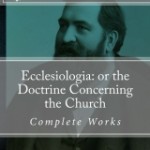In the pietistic tradition, the distinction between a visible and invisible church is highly emphasized. This doctrine made its way into the Waltherian school of Confessional Lutheranism; sometimes it is confessed that the church is purely invisible, though it has certain visible “signs” of its presence. There is some wisdom in separating true faith from external ecclesial structures, since faith is a matter of the heart, but ultimately I think this tradition misses the intimate connection between the physical and transcendental within Luther’s thought. In reading an article titled “Luther’s Double-Faceted Concept of the Church” by Vilmos Vajta (in the volume: Manns, Peter et. al. Luther’s Ecumenical Significant: An Interconfessional Consultation. Philadelphia: Fortress, 1984.)I came across the following quote of Luther which explains the relationship between the visible and invisible rather well:
“Therefore, for the sake of better understanding and brevity, we shall call the two churches by two distinct names. The first, which is natural, basic, essential, and true, we shall call ‘spiritual, inner Christendom.’ The second, which is man-made and external, we shall call ‘physical, external Christendom.’ Not that we want to separate them from each other; rather, it is just as if I were talking about a person and called him ‘spiritual’ according to his soul, and ‘physical’ according to his body, or as the Apostle is accustomed, to speak of an ‘internal’ and ‘external’ person. So, too, the Christian assembly is a community united in one faith according to the soul, although according to the body, it cannot be assembled in one place since every group of people is assembled in its own place.” (Luther’s Works Volume 39, page 70)
For Luther, there is an essential connection between the two aspects of the church. It’s not as if there are two separate churches, one visible and one invisible, but the church contains both a visible and invisible aspect. This is commensurate with Luther’s sacramental theology which maintains the reality of the earthly and heavenly elements in vital connection to one another. Thus Luther’s view of the church is not that of an ethereal Platonic reality as some allege, but is thoroughly incarnational. Not only is this more consistent with Luther’s own theology, and that of the church catholic, but portrays the usage of ecclesia in the New Testament.
















